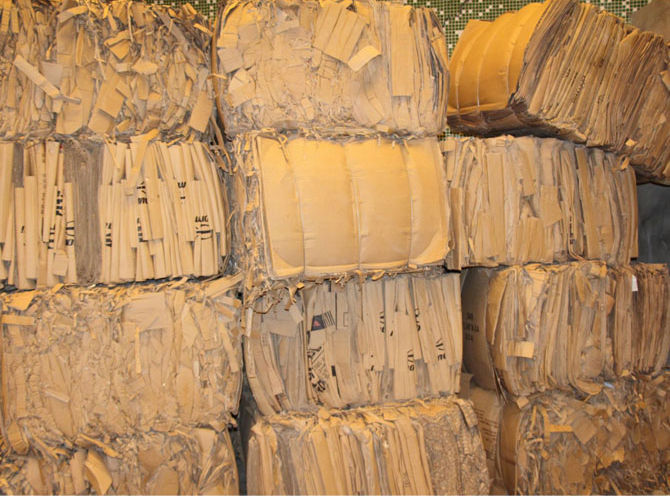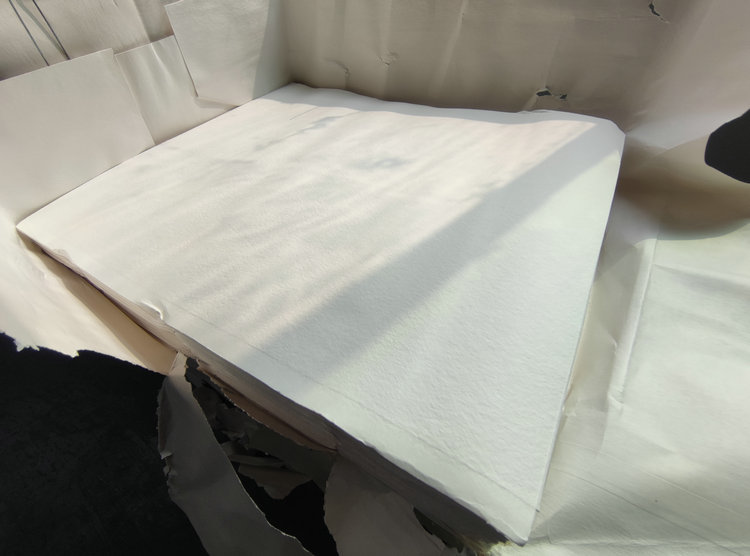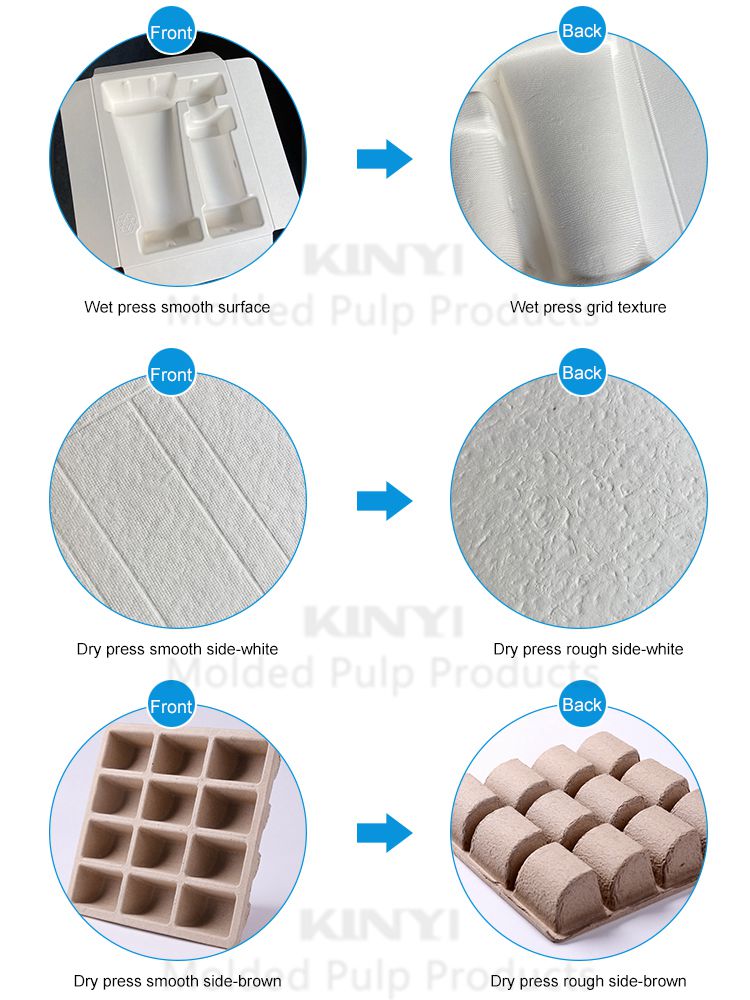The difference between dry pressing process and we
Paper tray is an environmentally friendly packaging material, mainly made through pulp molding process. Dry pressing process and wet pressing process are two different methods for producing paper trays, and they have significant differences in raw materials, production processes, product characteristics, and other aspects. The following are the main differences between dry pressing and wet pressing processes:
1. * * Raw materials * *:
-Dry press tray: usually uses recycled materials such as waste newspapers and pulp as raw materials. These materials undergo processes such as pulping and screening to form pulp.

-Wet press tray: It often uses raw materials such as sugarcane bagasse and pulp, which are more environmentally friendly and can meet food grade standards.

2. * * Production process * *:
-Dry press tray: After the pulp is formed in the mold, it needs to be dried or air dried. This process is greatly affected by weather and has low production efficiency.
-Wet press tray: After the pulp is formed in the mold, it is directly subjected to high-temperature hot pressing. This process is not affected by weather and has high production efficiency.
3. * * Product Appearance * *:
-Dry press tray: The surface of the product is rough and the color is dark, usually dark yellow. The back has a mesh pattern and screen printing, and it is very clear and distinct.
-Wet press tray: The product has a smooth surface, beautiful appearance, and bright color, usually white or close to the color of the original pulp.

4. * * Cost * *:
-Dry press tray: The mold price and product unit price are relatively low, suitable for large-scale production, but the product quality is relatively poor.
-Wet press tray: The mold price and product unit price are higher, but the product quality is better, suitable for high-end product packaging.
5. * * Application Fields * *:
-Dry press tray: commonly used for egg trays, mid to low end product inner trays, rough large product packaging, etc.
-Wet press tray: suitable for packaging high-end or branded products, such as electronics, appliances, cosmetics, food, etc.
6. Anti static and anti-corrosion performance:
-Dry press tray: The anti-static and anti-corrosion performance is average.
-Wet press tray: It has good anti-static and anti-corrosion properties, suitable for products with high requirements for these properties.
Through the above comparison, it can be seen that wet press paper holders have significant advantages in terms of environmental friendliness, aesthetic appearance, and product quality, but the cost is relatively high; Dry paper trays have more advantages in cost control and are suitable for large-scale production and cost sensitive application scenarios.
KINYI team
Hot 
Newest 
- 联系我们果博东方在线开户客服电话:19038688886
- 2024-August Shanghai Packaging Exhibition
- The impact of plastic waste
- The difference between dry pressing process and we
- The development history of pulp tray
- KINYI Hong Kong printing and packaging exhibition
- Kinyi has recently passed BSCI certification
- Kinyi New biodegradable test report
- Kinyi 2024 New Year's Day Holiday Notice
- Kinyi Biodegradable Paper Pulp Planters
- Kinyi 2022 Chinese New Year Hoiday Notice
- The Production Process of Molded Pulp Packaging
- Molded Pulp Packaging -Waste to Treasure






